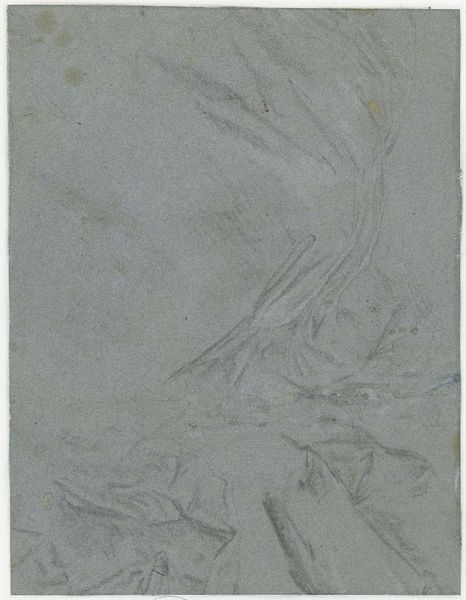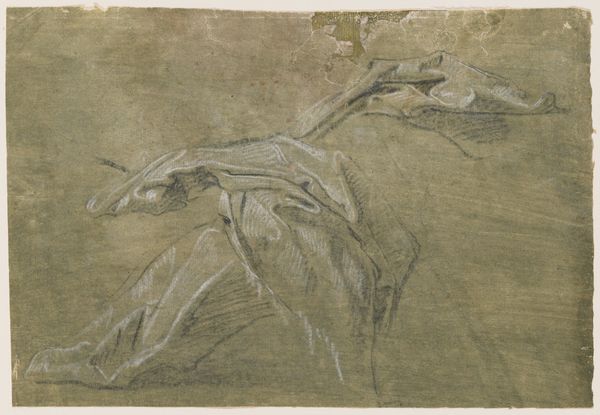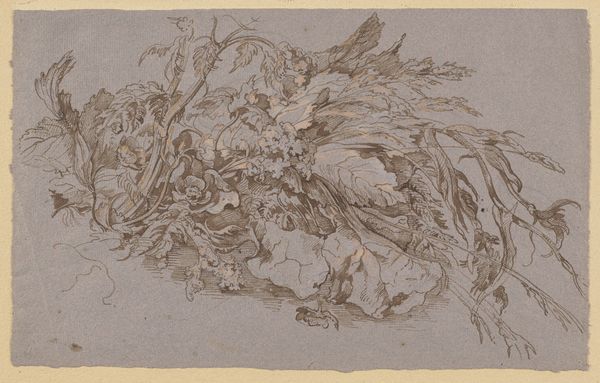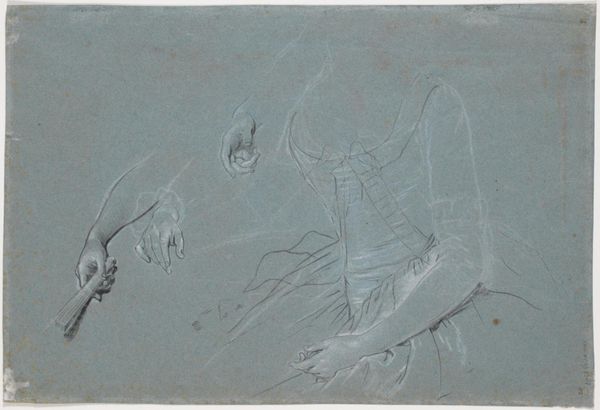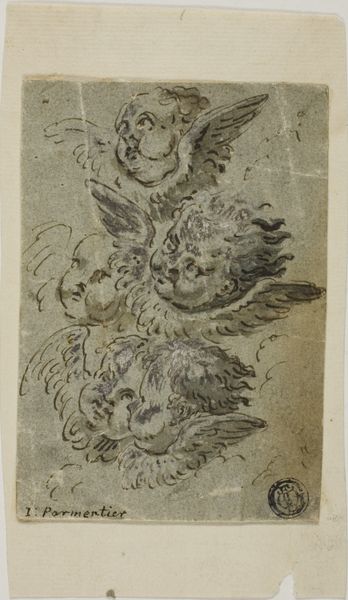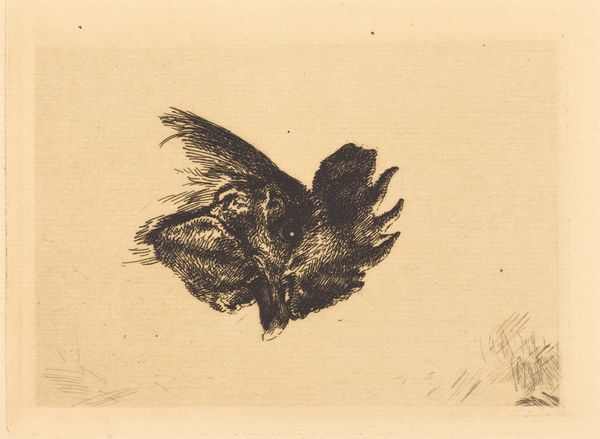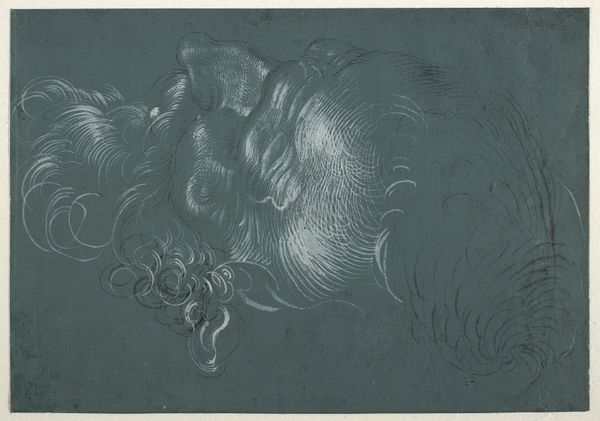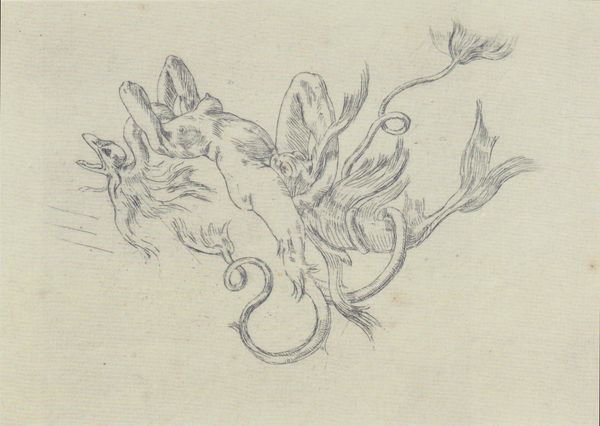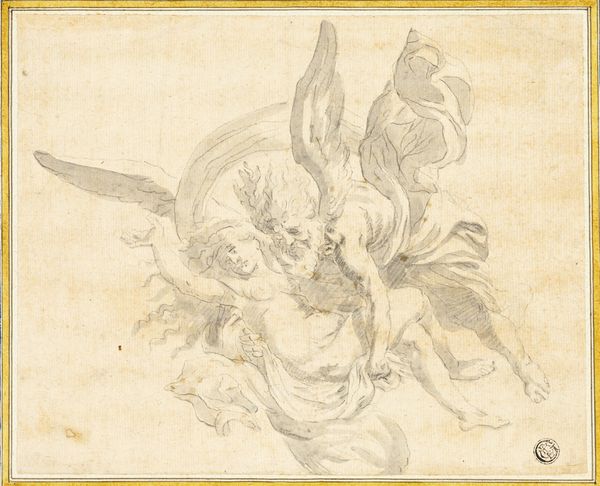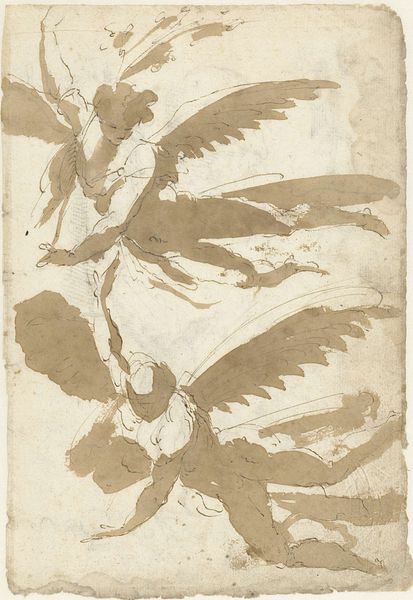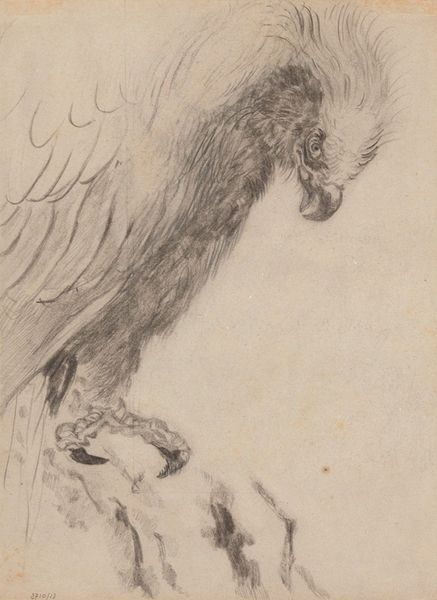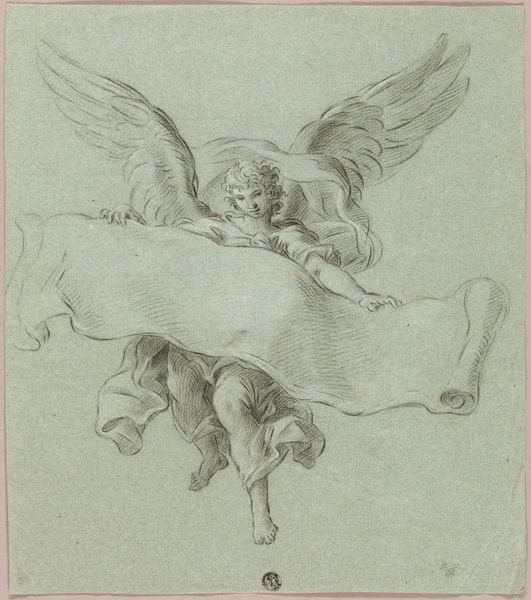
drawing, print
#
drawing
#
baroque
# print
#
figuration
#
coloured pencil
#
line
#
realism
Dimensions: 13-11/16 x 9-3/4 in. (34.7 x 24.8 cm)
Copyright: Public Domain
Editor: Here we have Giovanni Battista Tiepolo’s "An Eagle with Wings Spread," created sometime between 1696 and 1770. It looks like it's made with colored pencil and perhaps printed. It feels very dynamic to me, full of barely restrained power. How do you interpret this work? Curator: For me, it’s essential to consider Tiepolo’s practice – these were likely working drawings. I wonder what the socio-economic factors are driving the demand for large-scale decorative paintings in Venice during the 18th century? Understanding Tiepolo's process— his studio and workshop – helps us appreciate the materiality and means of production behind such an image. This drawing might have been for transferring a design to a larger surface like a ceiling fresco. What kind of labour would it require to scale this up to monumental proportions? Editor: That’s a fascinating way to look at it! I hadn't considered the labor involved in that way, only seeing the "genius" of the artist. So, the 'prestige' we associate with 'high art' relies on skilled artisans who did most of the practical work? Curator: Precisely! Consider the paper itself. Where did it come from? Who made it? How much did it cost? These considerations situate Tiepolo's drawing within a network of materials, labour, and consumption. The paper isn’t merely a passive surface; it embodies a whole world of work. The printmaking aspect interests me also; consider this method allowed for wider distribution than the drawing itself. What sort of clientele had access to art in those different mediums? Editor: I never thought about art history this way, focusing on materials and labor instead of just "artistic genius." It’s almost like detective work, piecing together the economic picture of the art world. Curator: Exactly. Thinking about materials, process, and labour brings a whole new dimension to understanding a work like this.
Comments
No comments
Be the first to comment and join the conversation on the ultimate creative platform.
